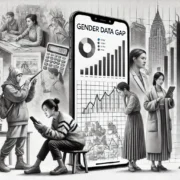The path to success for women has been paved with determination, resilience, and unwavering commitment. Yet, despite the remarkable strides women have made in the workplace, the insidious challenge of implicit bias remains a formidable hurdle. In this thought leadership article, we delve deep into the complexities of implicit bias in the workplace, exploring its multifaceted nature, its impact on women in leadership, and most importantly, strategies to overcome it. As we navigate the treacherous waters of bias, we aim to empower women with the knowledge and tools needed to shatter the glass ceiling once and for all.
Implicit Bias: Unseen but Potent
Implicit bias, often referred to as unconscious bias, is the hidden influence that shapes our judgments and decisions. It operates beneath the surface of our awareness, driven by societal stereotypes and ingrained beliefs. While everyone is susceptible to implicit bias, women in leadership roles often bear the brunt of its consequences. The persistence of stereotypes portraying leadership as a male domain can lead to women being unfairly judged, overlooked for promotions, or underestimated in their capabilities.
The Perpetuation of Gender Bias
In the quest to dismantle implicit bias, it is crucial to understand how it perpetuates gender inequality in the workplace. Studies consistently reveal that women face bias at every stage of their careers, from recruitment to performance evaluations. Words like ‘bossy’ or ’emotional’ are often used to describe assertive women, while their male counterparts are praised for their ‘leadership’ and ‘confidence.’ This double standard is a manifestation of implicit bias that must be acknowledged and dismantled.
The Confidence Gap Myth
One prevailing myth that emerges from implicit bias is the ‘confidence gap.’ Women are frequently told that they need to be more confident to succeed in leadership roles. However, this narrative obscures the real issue: the societal biases that undermine women’s self-assurance in the first place. By addressing implicit bias, we can tackle the root cause of this perceived gap and empower women to step into their leadership potential unapologetically.
Breaking the Bias Barrier
To eradicate implicit bias in the workplace, a multifaceted approach is required. Organizations can play a pivotal role in creating an inclusive environment by implementing bias training, promoting diverse leadership, and establishing transparent promotion processes. Women in leadership positions can also take steps to mitigate bias by seeking mentorship, forming supportive networks, and advocating for their own worth.
Leading with Authenticity
An essential aspect of dismantling implicit bias is redefining leadership. Women have unique strengths and qualities that, when embraced, can be transformational in the corporate world. Authentic leadership, characterized by empathy, collaboration, and a commitment to values, can help women break free from the constraints of bias. By leading with authenticity, women in leadership not only challenge stereotypes but also inspire others to do the same.
Implicit bias is a formidable foe in the journey towards gender equality in the workplace, but it is not insurmountable. As women in leadership, it is our collective responsibility to confront this bias head-on, armed with knowledge, resilience, and unwavering determination. By doing so, we not only advance our own careers but also pave the way for the generations of women who will follow in our footsteps.
We must remember that true leadership is not bound by gender but defined by vision, competence, and character. Let us rise above the limitations of bias, shatter the glass ceiling, and leave an indelible mark on the world of leadership. Together, we can create a workplace where every woman, regardless of her background, is empowered to thrive and lead with authenticity.






